CS Lewis-Chronicles of Narnia-The Lion, Witch & Wardrobe-Narnia Trail
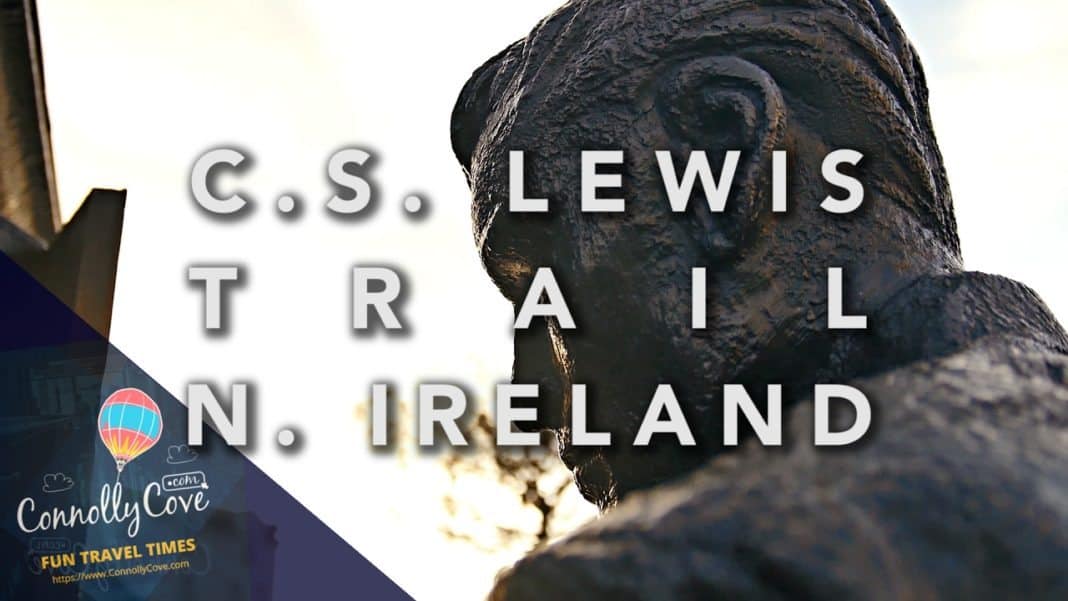
Updated On: April 20, 2024 by Ciaran Connolly
CS Lewis Background – born in Belfast on 29th November 1898, created the world of Narnia that is loved all around the world. Here we follow his footsteps through Belfast and Northern Ireland – seeing what inspired him to create such a wonderful place. We also showcase the CS Lewis Trail which has been created to commemorate his greatest works.
Let us take you through the story of CS Lewis and Narnia!
CS Lewis Biography
Born on 29 November 1898 in Belfast, Ireland to Albert James Lewis and Florence Augusta CS Lewis, Clive Staples Lewis (widely known as CS Lewis) was a renowned novelist, poet, academic, and literary critic. He received a First in Honour Moderations (Greek and Latin literature) from Oxford University in 1920, a First in Greats (Philosophy and Ancient History) in 1922, and a First in English in 1923.
While he held academic positions at Oxford University, where he taught alongside fellow author J. R. R. Tolkien, and Cambridge University, CS Lewis is best known for his literary fictional works, including The Screwtape Letters, The Chronicles of Narnia, and The Space Trilogy.
The following pictures are possible of the famous lamppost from Narnia- meant to be from an early school – Campbell College:

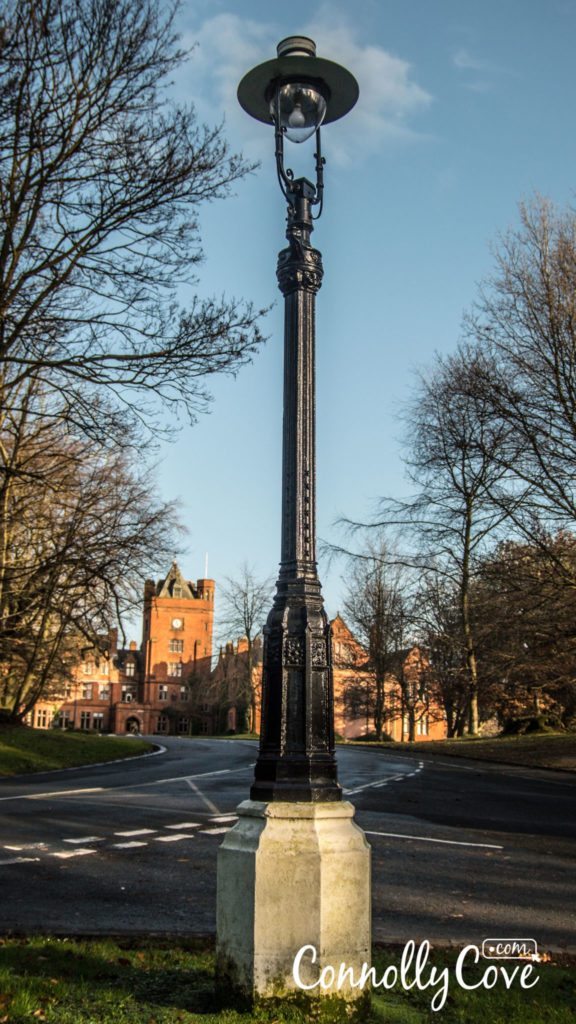
Childhood of CS Lewis
CS Lewis’ paternal grandfather Richard traveled to Ireland from Wales during the mid-19th century, where the family lived from then on. Lewis had an elder brother, Warren Hamilton Lewis.
He was known to his family and friends as Jack, due to an incident from his childhood where his dog Jacksie died. So CS Lewis insisted on being named after his late dog, however, he later accepted being named Jack. A name which they continued to call him with for the rest of his life.
When he was seven, CS Lewis’ family moved to their new family home “Little Lea” in the Strandtown area of East Belfast.
His Love for Reading
During his childhood years, CS Lewis also developed an avid fondness for reading and grew quite attached to the characters created by Beatrix Potter, which led him to write and illustrate his own animal stories.
His imagination was ripe even at a young age. As he, along with his brother, came up with the fantasy world of Boxen. Which is inhabited and run by animals.
School Life
CS Lewis attended Wynyard School in Watford, Hertfordshire, in 1908, however, the school was closed not long afterward due to a lack of pupils. Lewis then attended Campbell College in the east of Belfast, but he left soon after due to health issues. Later on, he was sent to a health-resort town, where he attended a preparatory school.
During his time there, CS Lewis abandoned his childhood Christian faith and became an atheist. After he developed an interest in mythology and the occult. In 1913, Lewis enrolled at Malvern College, where he remained until the following June. After leaving Malvern, he studied privately with William T. Kirkpatrick, his father’s old tutor and former headmaster of Lurgan College.
In 1916, CS Lewis was awarded a scholarship at University College, Oxford. Within months, however, he was conscripted to the British Army and shipped to France to fight in WWI. His experience of the horrors of war confirmed his atheism.
The CS Lewis Trail has all the key characters from The Chronicles of Narnia on site – these include Aslan the Lion –
Which I am sure you will agree is stunning.
First World War
In 1917, CS Lewis joined the Officers’ Training Corps at Oxford and was then drafted into a Cadet Battalion for training. He was commissioned as a Second Lieutenant in the Third Battalion of the Somerset Light Infantry in the British Army. He arrived at the front line in the Somme Valley in France as he turned 19. Where he experienced the horrors of trench warfare. In 1918, CS Lewis was wounded and upon his recovery, he was assigned to duty in Andover, England. He was demobilized in December 1918 and soon restarted his studies.
Mr. Tumnus –
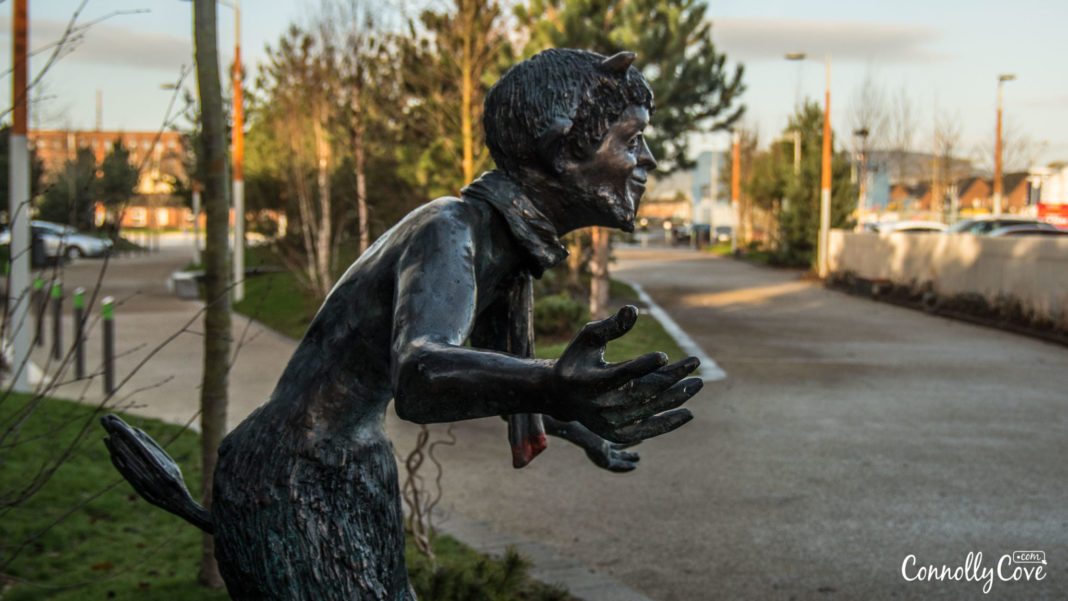
The Consequences of the War
During his army training, CS Lewis shared a room with Cadet Edward “Paddy” Moore. Fearing for their families in the event that they should lose their lives, both soldiers agreed that if either died during the war, the survivor would take care of both their families. After Paddy was killed in action in 1918, Lewis kept his promise and looked after his mother, Jane King Moore. The two actually developed a close friendship and Lewis cared for her until her death in 1951.
During her life, CS Lewis had actually moved in with Mrs. Moore, her daughter Maureen and his brother Warnie into “The Kilns”.
After the outbreak of WWII in 1939, the Lewis’s took child evacuees from London and other cities into The Kilns.
The Kilns Children
The Reverend Tom Honey, vicar of the church Lewis attended outside of Oxford, England, explains, “Lewis and his household welcomed evacuee children to live at his home, The Kilns, during the Second World War. The children were often from poor families, whose homes were in danger from bombs during the London Blitz. He indulged these children, even when his adopted mother, Mrs Moore, was less inclined to generosity.”
Going Back to The Miltary Service– CS Lewis Biography
Lewis, 40 at the time, tried to re-enter military service, offering to instruct cadets; but his offer was not accepted. CS Lewis rejected an offer made to him by the recruiting office as they suggested that he write columns for the Ministry of Information in the press, as he did not agree with the method of writing lies to deceive the enemy. He later served in the local Home Guard in Oxford.
Lewis did not simply stand by, though, as he spoke on religious programs on the BBC from London while the city was suffering from periodic attacks and air raids. These broadcasts were appreciated by civilians and servicemen at that stage.
The broadcasts were anthologized in a book entitled Mere Christianity.
Mr. and Mrs Beaver –
Leaving Ireland and His Impression of England
As he departed Ireland for the English shores, CS Lewis experienced a sort of cultural shock. In his autobiography, titled Surprised by Joy, Lewis wrote: “The strange English accents with which I was surrounded seemed like the voices of demons. But what was worst was the English landscape … I have made up the quarrel since, but at that moment I conceived a hatred for England which took many years to heal.”
His love of the Irish language led to his interest in the writings of W. B. Yeats, because of Yeats’s use of Ireland’s Celtic heritage in poetry. Both writers actually met twice in 1921.
Throughout his life, CS Lewis visited Northern Ireland regularly, even spending his honeymoon there in 1958 at the Old Inn, Crawfordsburn. He called this “my Irish life”.
CS Lewis Married Life
CS Lewis married American writer Joy Davidman in 1956. However, she died of cancer four years later at the age of 45. Lewis died on 22 November 1963 from renal failure, one week before his 65th birthday.
The Stone Table –
Religion
CS Lewis was baptized in the Church of Ireland, however, he fell away from his faith during adolescence, only to return to Anglicanism at the age of 32, owing to the influence of Tolkien and other friends. His faith had a significant effect on his later works affected his work, and his wartime radio broadcasts on Christianity brought him wide acclaim.
Myth and Religion in his Life
In a brief essay in God in the Dock, entitled “Myth Became Fact”, CS Lewis explains his ideas on myth and religion; an ideology which of course manifested itself in his writings.
“Now as myth transcends thought, Incarnation transcends myth. The heart of Christianity is a myth which is also a fact. The old myth of the Dying God, without ceasing to be a myth, comes down from the heaven of legend and imagination to the earth of history. It happens—at a particular date, in a particular place, followed by definable historical consequences. We pass from a Balder or an Osiris, dying nobody knows when or where to a historical Person crucified (it is all in order) under Pontius Pilate.
By becoming fact it does not cease to be myth: that is the miracle. I suspect that men have sometimes derived more spiritual sustenance from myths they did not believe than from the religion they professed. To be truly Christian we must both assent to the historical fact and also receive the myth (fact though it has become) with the same imaginative embrace which we accord to all myths. One is hardly more necessary than the other.
A man who disbelieved the Christian story as fact but continually fed on it as myth would, perhaps, be more spiritually alive than one who assented and did not think much about it. The modernist—the extreme modernist, infidel in all but name—need not be called a fool or hypocrite because he obstinately retains, even in the midst of his intellectual atheism, the language, rites, sacraments, and story of the Christians. The poor man may be clinging (with the wisdom he himself by no means understands) to that which is his life…
More on Religions Influence on CS Lewis’ Life
Those who do not know that this great myth became a Fact when the Virgin conceived are, indeed, to be pitied. But Christians also need to be reminded…that what became Fact was a Myth, that it carries with it into the world of Fact all the properties of a myth. God is more than a god, not less; Christ is more than Balder, not less. We must not be ashamed of the mythical radiance resting on our theology.
We must not be nervous about ‘parallels’ and ‘Pagan Christs’: they ought to be there—it would be a stumbling block if they weren’t. We must not, in false spirituality, withhold our imaginative welcome. If God chooses to be mythopoeic—and is not the sky itself a myth—shall we refuse to be myopathic?
For this is the marriage of heaven and earth: Perfect Myth and Perfect Fact: claiming not only our love and our obedience, but also our wonder and delight, addressed to the savage, the chilled, and the poet in each one of us no less than to the moralist, the scholar, and the philosopher.”
The White Witch and her Wolves – click on any picture to see it in more detail!
CS Lewis and his Deep Understanding of Children
Although Lewis was a bachelor for most of his life and never fathered children of his own, he seemed to possess a genuine connection and deep understating of children and treated them as equals. He once wrote of a particular connection he made with a child, “Once in a hotel dining-room, I said, rather too loudly, ‘I loathe prunes.’ ‘So do I,’ came an unexpected six-year-old voice from another table. Sympathy was instantaneous. Neither of us thought it funny. We both knew that prunes are far too nasty to be funny. That is the proper meeting between man and child as independent personalities.”
It is also noted that numerous children wrote CS Lewis with critical questions about The Chronicles of Narnia and he always took the time to reply back to the point by point without fail, challenging them to further explore their ideas.
The Seeker – CS Lewis Square
The Development of His Writings
During his teenage years, Lewis discovered the ancient literature of Scandinavia as it was preserved in the Icelandic sagas. This new interest led to his love of nature and later on his writings developed and moved out of the tales of Boxen to include a variety of different art forms, including epic poetry and opera.
After his conversion to Christianity, his interests gravitated towards Christian theology and away from pagan Celtic mysticism. Most of his writings tend to deal with Christian themes such as sin, humanity’s fall from grace, and redemption.
In 1929, CS Lewis founded a discussion society known as the “Inklings”, joined by J. R. R. Tolkien, Nevill Coghill, Lord David Cecil, Charles Williams, Owen Barfield, and his brother Warren Lewis.
Books by CS. Lewis
CS Lewis’ works have been translated into more than 30 languages and have sold millions of copies. The CS Lewis Chronicles of Narnia series has sold the most and has been adapted into numerous stage, TV, radio, and cinema productions.
Surprised by Joy: The Shape of My Early Life
This book is a partial autobiography by CS Lewis which was published in 1955. In it, he describes his conversion to Christianity 24 years earlier.
His apparent aim behind writing this autobiography is to describe the events surrounding his discovery of and search for the phenomenon he labeled “Joy”, his best translation of the idea of Sehnsucht (German: longing). He describes the emotion as “an unsatisfied desire which is itself more desirable than any other satisfaction.”
Unlike regular autobiographies, this book does not describe specific events in Lewis’ life, however, it recounts his early years with a measure of amusement mixed with pain.
Lewis ultimately discovers the true nature and purpose of Joy and its place in his own life. The book’s last two chapters describe how he finally reaches the end of his search as he makes the transition from atheism to theism and then to Christianity.
Although the idea of the book is the search for “Joy”, it is in no way related to Lewis’ marriage to Joy Gresham, since it occurred long after the period described.
Wordsworth Poem
The title of the book is an allusion to William Wordsworth’s poem, “Surprised By Joy — Impatient As The Wind”, relating an incident when Wordsworth forgot the death of his beloved daughter:
Surprised by joy — impatient as the Wind
I turned to share the transport — Oh! with whom
But Thee, deep buried in the silent tomb,
That spot which no vicissitude can find?
Love, faithful love, recalled thee to my mind —
But how could I forget thee? Through what power,
Even for the least division of an hour,
Have I been so beguiled as to be blind
To my most grievous loss? — That thought’s return
Was the worst pang that sorrow ever bore,
Save one, one only, when I stood forlorn,
Knowing my heart’s best treasure was no more;
That neither present time nor years unborn
Could to my sight that heavenly face restore.
CS Lewis wrote Surprised by Joy over a period of seven years (1948 – 1955), chronicling his life from 1898 to 1931.
The Times Literary Supplement, reviewed the book in 1995 saying, “The tension of these final chapters holds the interest like the close of a thriller. Nor is this lessened by the fact that the spiritual experiences here recorded follow – intellectually, at least – no common pattern. Few other Christians can have been convinced by just such strategy; few ever could be. God moves, indeed, in a mysterious way, and this book gives a brilliant account of one of the oddest and most decisive end-games He has ever played.”
So do visit the square yourself and you will be impressed by the detailed craftsmanship in the characters on display here. Here is a video of our trip to it –
The Pilgrim’s Regress
This book is an allegorical work of fiction by C. S. Lewis. Released in 1933, the novel was Lewis’s first published work of prose fiction. The book traces the progress of a character named John through a philosophical landscape as he searches for the Island of his desire. The book is inspired by John Bunyan’s 17th-century novel The Pilgrim’s Progress, and Lewis considered it a modern take on the earlier work.
Lewis’ main character struggles with a lot of modern 20th-century concepts, including the intellectual vacancy of the Christian church, Communism, Fascism, and various philosophical and artistic movements.
In a way, The Pilgrim’s Regress seems to echo CS. Lewis’s own journey from faith to atheism and then back to Christianity once again as his main character attempts to reconcile his previous beliefs with his new desires.
The novel was written in two weeks and received mixed reviews at the time of its release. Lewis actually had to write a preface later on to clarify some of the issues that resulted from unintentional obscurity and changes in the philosophical thought of the early twentieth century.
Space Trilogy
Lewis wrote The Space Trilogy as a means of dealing with what he believed to be a dehumanizing trend in contemporary science fiction. A discussion with J.R.R. Tolkien helped inspire him to write the first book in the trilogy: Out of the Silent Planet. It is also believed that the main character in the trilogy, Elwin Ransom, is based in part on Tolkien himself.
The second novel, Perelandra, poses an alternate world where Adam resisted the temptation of the serpent in the Garden of Eden and the Fall of Man was prevented.
The third novel, That Hideous Strength, deals with the theme of nihilistic science and how to poses a threat to traditional human values in the shape of an Arthurian legend.
Lewis is said to have enjoyed many trips to the North Coast of Ireland and it is believed that the stunning ruins of Dunluce Castle inspired a well-known castle from his stories. Take a glimpse at this short movie to see why –
Easy to see how this castle inspired CS. Lewis!
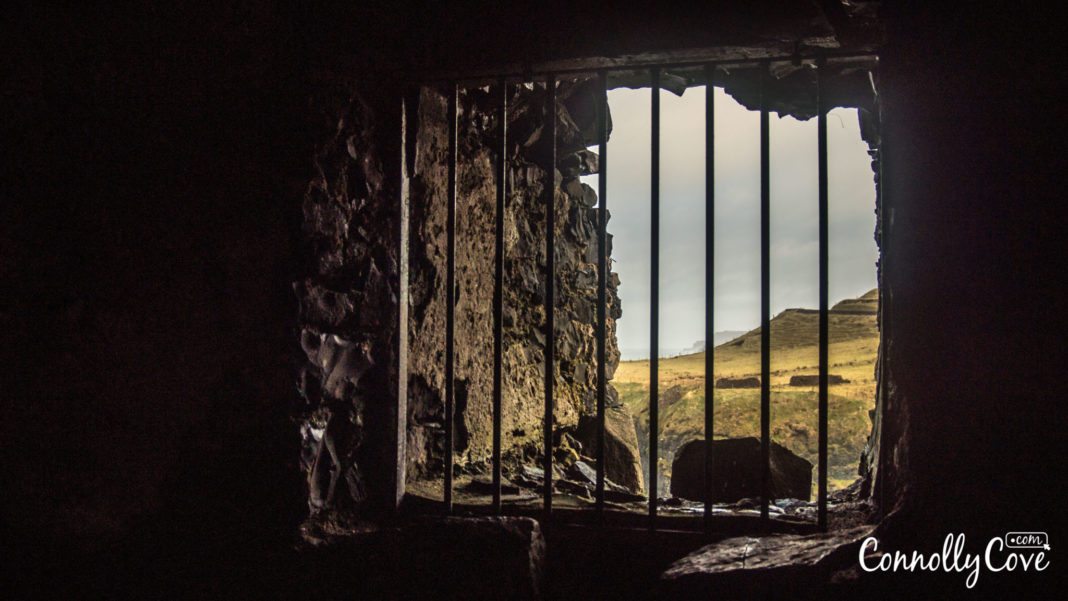
The Chronicles of Narnia
Arguably, the most renowned of CS. Lewis’ works, the Chronicles of Narnia is a series of seven fantasy novels that are considered a classic of children’s literature. The series sold over 100 million copies in 47 languages since its publication in the 1950s. The series has been adapted for radio, television, the stage, and film.
The name Narnia is based on the Italian word “Narni”, an ancient hill town in Umbria, central Italy, which is written in Latin as Narnia. Lewis came across the name in an atlas as a child.
Set in the fictional realm of Narnia, a fantasy world of magic, mythical beasts, and talking animals, the series narrates the adventures of various children as they are magically transported to Narnia, where they are called upon by the lion Aslan to save Narnia from evil and restore the throne to the rightful people. The books span the entire history of Narnia, from its creation in The Magician’s Nephew to its eventual destruction in The Last Battle.

More Information on Chronicles of Narnia
The series is actually based on several Christian themes, as well as Greek and Roman mythology and traditional British and Irish fairy tales. Lewis attributed the inspiration behind The Lion, the Witch, and the Wardrobe to an essay entitled “It All Began with a Picture, saying “The Lion all began with a picture of a Faun carrying an umbrella and parcels in a snowy wood. This picture had been in my mind since I was about sixteen. Then one day, when I was about forty, I said to myself: ‘Let’s try to make a story about it.’”
Inspiration Behind The Book
He was also inspired during WWII when children were evacuated to the countryside to escape the raids in London. Four young children were settled at The Kilns and so Lewis gained a certain insight into their world and was able to begin working on the world of Narnia:
“This book is about four children whose names were Ann, Martin, Rose and Peter. But it is most about Peter who was the youngest. They all had to go away from London suddenly because of Air Raids, and because Father, who was in the Army, had gone off to the War and Mother was doing some kind of war work. They were sent to stay with a kind of relation of Mother’s who was a very old professor who lived all by himself in the country.”
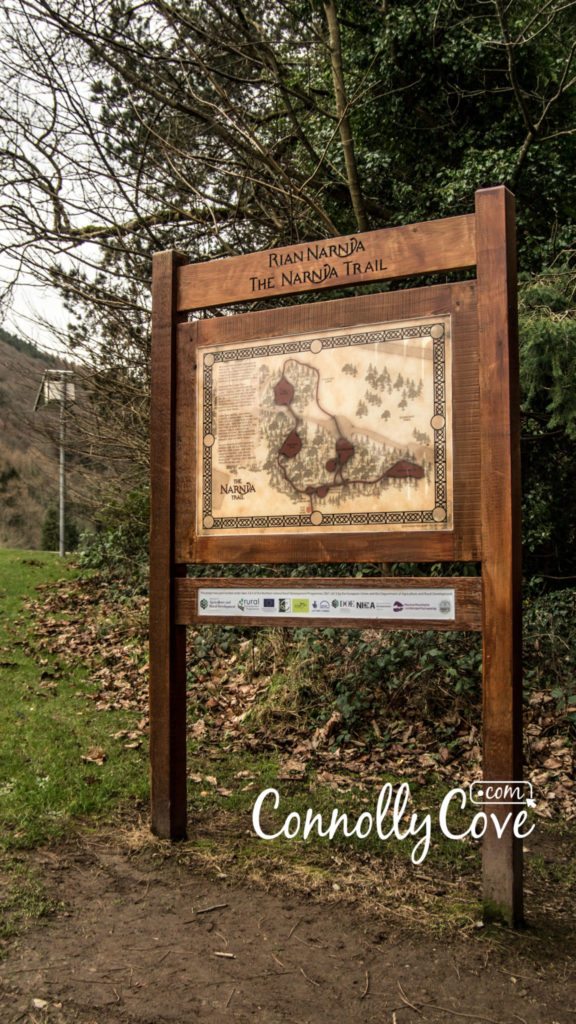
Lewis is considered to be a trailblazer in children’s fiction as he called upon themes in the series that had not been previously utilized in this specific genre, such as religion, race, and gender. Although the use of these particular themes had been deemed as controversial at the time, now critics hail the writer as a pioneer in modern children’s fiction.
While Lewis began forming the idea of The Chronicles of Narnia in 1939, he finished writing the first book The Lion, the Witch and the Wardrobe in 1949. The books were not written in the order in which they were originally published, nor were they published in their current chronological order.
Here are the books that make up this fantastic series:
The Lion, the Witch and the Wardrobe (1950)
The first book in the series traces the journey of four brothers and sisters: Peter, Susan, Edmund, and Lucy Pevensie, who were evacuated to the English countryside from London in 1940 following the outbreak of World War II.
The children end up discovering a magical wardrobe in Professor Digory Kirke’s house that transports them to the land of Narnia. They get embroiled in the pseudo-political strife in Narnia as they help Aslan, a talking lion, save the magical kingdom from the evil White Witch, who has reigned over the land of Narnia for a century of perpetual winter with no Christmas. Due to their heroic attitude, they become kings and queens of Narnia reigning over its Golden Age and leaving behind a thrilling legacy.

Prince Caspian: The Return to Narnia (1951)
The second book in the series revolves around the children’s return to Narnia for a second journey. They are summoned back by Prince Caspian who requires their help. Upon arrival, they discover that Narnia is no longer the same.
Already, over a thousand years have gone by and their once glorious castle is now in ruins, while all Narnians have retreated so far within themselves that only Aslan’s magic can wake them. Caspian’s uncle has usurped the thrones and the young Prince has fled into the woods to escape. The children set out once again to save Narnia.
The Voyage of the Dawn Treader (1952)
In The Voyage of the Dawn Treader, Edmund and Lucy, along with their cousin, Eustace, return to Narnia. They join Prince Caspian’s voyage on the ship Dawn Treader to find the seven lords who were banished when Miraz took over the throne.
The Silver Chair (1953)
The Silver Chair is the first Narnia book that does not feature any of the Pevensie children and 50 years have passed in Narnia. Instead, Aslan calls Eustace and his classmate Jill Pole back to Narnia where they are given four signs to aid them in the search for Prince Rilian, Caspian’s son, who disappeared after setting out ten years earlier to avenge his mother’s death.
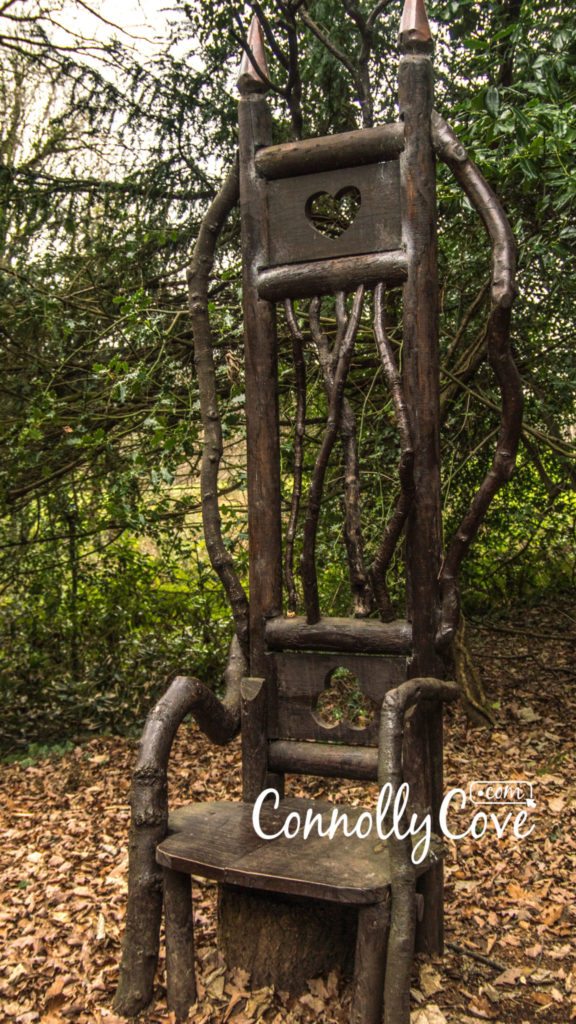
The Horse and His Boy (1954)
The story takes us back to the era when Pevensie children ruled over Narnia. The book introduces new characters in the form of a talking horse called Bree and a young boy named Shasta, both of whom are in bondage in the country of Calormen, who are the protagonists who are seeking their freedom in Narnia.
The Magician’s Nephew (1955)
The Magician’s Nephew is a prequel to the series that details the origins of Narnia, how Aslan created the world, and how evil first entered it.
The Last Battle (1956)
The Last Battle relates how the world of Narnia ends. Jill and Eustace return to save Narnia from Shift, an ape, who tricks Puzzle, a donkey, into impersonating the lion Aslan, which leads to a showdown between the Calormenes and King Tirian. Narnia eventually falls apart, revealing the true Narnia to which Aslan brings them.
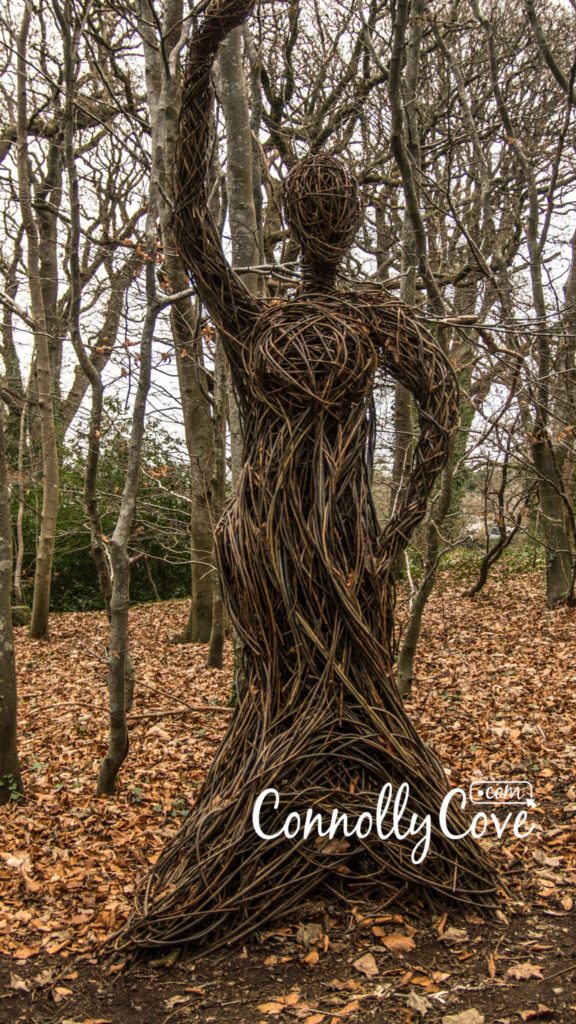
The Main Characters in The Chronicles of Narnia
Aslan
Aslan, the Great Lion, is the only character to appear in all seven books. He is a talking lion, who represents the authority figure and serves as a guide to the children, as well as being the guardian and savior of Narnia. C. S. Lewis described Aslan as a metaphorical figure representing Jesus Christ.
Pevensie family
The four Pevensie siblings are the main human protagonists of The Chronicles of Narnia. They become Kings and Queens of Narnia: High King Peter the Magnificent, Queen Susan the Gentle, King Edmund the Just, and Queen Lucy the Valiant.
Eustace Scrubb
Eustace Clarence Scrubb is a cousin of the Pevensies and a classmate of Jill Pole at their school Experiment House. At first, he is portrayed as a brat and a bully but gradually seems to improve his horrible behavior after his greed turns him into a dragon for a while.
Jill Pole
Jill Pole is a classmate and neighbor of Eustace Scrubb. She appears in The Silver Chair, where most of the action takes place from her point of view. She reappears in The Last Battle.
Prince Caspian
Prince Caspian is the title character of the second book in the series, first introduced as the young nephew and heir of King Miraz of Narnia. Caspian is also a central character in The Voyage of the Dawn Treader and appears briefly at the beginning and end of The Silver Chair.
White Witch / Jadis
The White Witch is the main antagonist of The Magician’s Nephew and The Lion, The Witch, and the Wardrobe. She is the witch responsible for the freezing of Narnia resulting in the Hundred Year Winter. She was born in the world of Charn, before the creation of Narnia, and died in battle in the Narnian year 1000.
Rostrevor was another beauty spot that CS. Lewis and his family often visited – the landscape inspired him on each visit. If you have never been in Rostrevor – check it out here –
More Books by C. S Lewis
Mere Christianity
This theological book was adapted from a series of BBC radio talks made between 1942 and 1944. A notable Christian apologist, Lewis defended the Christian faith based on an argument from morality, which is the same argument that persuaded them to return to the Christian faith.
In the beginning chapters of Mere Christianity, Lewis discusses the idea that people have a standard of behavior to which they expect people to adhere called Universal Morality or Natural Law.
“These then are the two points that I wanted to make. First, that human beings, all over the earth, have this curious idea that they ought to behave in a certain way, and cannot really get rid of it. Secondly, they do not, in fact, behave in that way. They know the Law of Nature; they break it. These two facts are the foundation of all clear thinking about ourselves and the universe we live in.”
Lewis also mentions Universal Morality in The Chronicles of Narnia where he describes it as the “deep magic” which everyone knew.
The Great Divorce
For this literary work, CS. Lewis drew inspiration for many of his favorite authors, including Dante Alighieri, John Milton, John Bunyan, and Lewis Carroll.
In the book, the narrator finds himself in a joyless city, aptly named the “grey town”, which seems to depict Hell or Purgatory. He later takes a bus that transports its passengers to the foothills of heaven and on there the passengers are revealed to be ghosts. Although their destination is completely beautiful on the outside, it turns out that every feature of the landscape they can see is actually solid.
The passengers’ loved ones from Earth come to urge them to repent and enter Heaven. Almost all of the ghosts choose to return instead to the grey town, giving various flimsy reasons and excuses.
Just as Dante’s met his mentor Virgil in the Devine Comedy who guides him on his journey, the narrator in The Great Divorce is met by the writer George MacDonald.
It is slowly revealed that the grey town is, in fact, Hell. The book continues to explain how the characters may choose to repent and leave Hell in order to enter Heaven and embrace joy.
The Screwtape Letters
This book is a Christian apologetic novel written in a satirical style. First published in 1942, the story consists of a series of letters sent by a senior Demon Screwtape to his nephew Wormwood, a Junior Tempter. The uncle reprehends his nephew due to the young man’s responsibility in securing the damnation of a British man known as “the Patient”.
Till We Have Faces: A Myth Retold
Published in 1956, the book is a retelling of the legend of Cupid and Psyche, taking place in the fictional kingdom of Glome. The narrator initially begins by believing that the gods have forsaken them, however, in the second part of the book, she comes to understand that her previous accusation was misguided by her own failings and shortcomings and that the gods are lovingly present in humans’ lives.
The Abolition of Man: Reflections on education with special reference to the teaching of English in the upper forms of schools
Published in 1943, the book defends science as something worth pursuing but criticizes using it to debunk values.
The Allegory of Love: A Study in Medieval Tradition
Published in 1936, this is an exploration of the allegorical treatment of love in the Middle Ages and the Renaissance. The book includes poems in Classical and Medieval Latin, Middle English, and Old French, many of which were translated by Lewis himself.
The Discarded Image
The book discusses the structure of the medieval universe, its inhabitants, the notion of a finite universe, maintained by a celestial hierarchy, and the ideas of nature.
An Experiment in Criticism
Published in 1961, this work of non-fiction proposes that the quality of books should be measured not by how they are written, but by how they are read.
The Four Loves
The Four Loves explores the nature of love from a Christian and philosophical point of view.
God in the Dock
A collection of unpublished essays and speeches by CS. Lewis collected posthumously. The title is based on an analogy suggesting that modern human beings have come to prefer to place God on trial while acting as their judge.
A Grief Observed
The book contains a collection of Lewis’ reflections on the experience of bereavement following the death of his wife, Joy Davidman, in 1960.
Letters to Malcolm: Chiefly on Prayer
The book includes several letters written by Lewis to a fictional friend named “Malcolm” in which Lewis meditates on prayer as an intimate dialogue between man and God.
Of Other Worlds
A 1966 anthology of literary criticism that consists of several essays discussing the creation of science fiction or fantasy literature.
The Personal Heresy
The book contains a series of articles by CS. Lewis and Eustace Mandeville Wetenhall Tillyard. The essays discuss whether poetry is primarily a reflection of the author’s personality or something external to the author.
A Preface to Paradise Lost
Perhaps one of C. S. Lewis’s most famous academic works, the book originated through Lewis’s Ballard Matthews Lectures which he delivered at the University College of North Wales in 1941.
The Problem of Pain
A 1940 book in which Lewis argues that human pain, animal pain, and hell are not sufficient reasons to reject belief in a God.
Studies in Words
Lewis examines the history of various words used in the English language which have changed their meanings often throughout the centuries.
The World’s Last Night and Other Essays
A collection of essays by C. S. Lewis.
Influences in CS. Lewis’ life that inspired him to write The Chronicles of Narnia:
Lewis’ avid interest in medieval Celtic literature manifested itself in his books, especially The Voyage of the Dawn Treader, where the story takes after one of the Omarama, a type of traditional Old Irish tale that merges Christianity with Irish mythology to tell the story of a hero’s sea journey to the Otherworld.
How The Chronicles of Narnia by CS. Lewis influenced literature
Literary critics hail Philip Pullman’s fantasy series His Dark Materials as a response to The Chronicles of Narnia. Pullman is a self-described atheist who rejects the spiritual themes that prevail in The Chronicles of Narnia. Yet his series discusses many of the same themes and introduces some similar character types, including talking animals. Similarly, Pullman’s Northern Lights and The Lion, the Witch, and the Wardrobe both begin with a young girl hiding out in a wardrobe.
Philip Pullman’s Thoughts on Lewis
Although Pullman admires Lewis’s criticism and quotes it surprisingly often, he considered Narnia “morally loathsome.” In a 1998 essay for the Guardian, entitled “The Dark Side of Narnia,” Pullman condemned “the misogyny, the racism, the sado-masochistic relish for violence that permeates the whole cycle.”
He criticized Lewis for the way he seemingly depicted Susan Pevensie’s sexual coming of age—which was seemingly portrayed through her growing interest in “nylons and lipstick and invitations”—as grounds for exclusion from paradise. “Susan, like Cinderella, is undergoing a transition from one phase of her life to another.”
Pullman noted. “Lewis didn’t approve of that. He didn’t like women in general, or sexuality at all, at least at the stage in his life when he wrote the Narnia books. He was frightened and appalled at the notion of wanting to grow up. Susan, who did want to grow up, and who might have been the most interesting character in the whole cycle if she’d been allowed to, is a Cinderella in a story where the Ugly Sisters win.”
Pullman’s Criticism
According to Pullman, the series which end with the rest of the Pevensie siblings’ ascension to a neo-Platonic version of Narnia after they die in a railway accident, deliver a message that “death is better than life; boys are better than girls . . . and so on. There is no shortage of such nauseating drivel in Narnia, if you can face it.”
Although, he seems to agree that children’s fiction can be richer than adult literature, “There are some themes, some subjects, too large for adult fiction; they can only be dealt with adequately in a children’s book… In adult literary fiction, stories are there on sufferance.
Other things are felt to be more important: technique, style, literary knowingness… The present-day would-be George Eliot’s take up their stories as if with a pair of tongs. They’re embarrassed by them. If they could write novels without stories in them, they would. Sometimes they do.”
Pullman was even more critical of Tolkien’s work, describing the Rings series as “just fancy spun candy. There’s no substance to it.”
Literature Influences
Another literary figure whose works have been influenced by Lewis is Bill Willingham, whose comic book series, Fables, makes reference to a king called “The Great Lion”, which is considered by many as a reference to Aslan.
Lewis Influences on Katherine Paterson Book
The novel Bridge to Terabithia by Katherine Paterson has Leslie, one of the main characters, reveal to her co-protagonist Jesse her love of Lewis’s books, as she lends him her copy of The Chronicles of Narnia so that he can learn how to behave like a king. Her book also features the island name “Terabithia”, which sounds similar to Terebinthia, a Narnian island that appears in Prince Caspian and The Voyage of the Dawn Treader.
Harry Potter Author Fan of CS. Lewis Work
JK. Rowling, the renowned author of the Harry Potter books, has said that she was a fan of the works of Lewis as a child, and cites the influence of The Chronicles on her work: “I found myself thinking about the wardrobe route to Narnia when Harry is told he has to hurl himself at a barrier in Kings Cross Station. It dissolves and he’s on Platform Nine and Three-Quarters, and there’s the train for Hogwarts…Narnia is literally a different world, whereas in the Harry books you go into a world within a world that you can see if you happen to belong.
A lot of the humor comes from collisions between the magic and the everyday worlds. Generally, there isn’t much humor in the Narnia books, although I adored them when I was a child. I got so caught up I didn’t think CS. Lewis was especially preachy. Reading them now I find that his subliminal message isn’t very subliminal at all.”
Differences between Harry Potter and Naria
She also stresses the differences between Narnia and the wizarding world of Harry Potter: “Really, CS. Lewis had very different objectives to mine. When I write, I don’t intend to make a point or teach the philosophy of life. A problem you run into with a series is how the characters grow up … whether they’re allowed to grow up. The characters in Enid Blyton’s Famous Five books act in a prepubescent way right through the series.
In the Narnia books, the children are never allowed to grow up, even though they are growing older. I want Harry Potter and his friends to grow up as well as older, though I’ll keep it all humorous, well within the tone of the books. I want them eventually to be truly 17 and discover girlfriends and boyfriends and have sexual feelings – nothing too gritty. Why not allow them to have those feelings?”

Criticism
Aside from the high praise and critical acclaim that the books received, CS. Lewis’ series also had its fair share of criticism. Among the most prevalent criticisms was the fact that Lewis seemed to stereotype women through his female characters, especially Susan as she is described in some passages as follows: “Susan, like Cinderella, is undergoing a transition from one phase of her life to another. Lewis didn’t approve of that. He didn’t like women in general, or sexuality at all, at least at the stage in his life when he wrote the Narnia books. He was frightened and appalled at the notion of wanting to grow up.”
On the other hand, director Andrew Adamson once argued that “Interestingly, all of the books he wrote after meeting Joy (Gresham) have much stronger female characters.”
Critics have also accused Lewis of fostering racist tendencies, due to his portrayal of the Calormenes, calling them “standins for Muslims”. In the books, the Calormenes are described as having “dark faces and long beards.”
Nevertheless, it can be argued that there are too many dissimilarities between the Calormene religion and Islam, particularly in the areas of polytheism and human sacrifice, for Lewis’s writing to be regarded as critical of Islam.
CS. Lewis Adaptations
Television
- The first time that the series was adapted into a TV production was in 1967 for ten episodes of thirty minutes each directed by Helen Standage.
- In 1979, the series was adapted into an animated cartoon which went on to win the Emmy award for Outstanding Animated Program.
- Between 1988 and 1990, the BBC adapted the books into four serials, which were nominated for a 14 Emmy awards, including “Outstanding Children’s Program”, in addition to several BAFTA awards, including Best Children’s Program (Entertainment / Drama) in 1988, 1989 and 1990.
Radio
- In the 1980s, BBC Radio 4 produced an adaptation of the series, titled Tales of Narnia.
- Between 1998 and 2002 Focus on the Family produced radio dramatizations of the entire series. Over one hundred performers took part including Paul Scofield as the storyteller and David Suchet as Aslan.
Stage
- In 1984, The Lion, the Witch and the Wardrobe was presented at London’s Westminster Theatre. The production was later revived at Westminster and The Royalty Theatre and went on tour until 1997.
- In 1997, Trumpets Inc. produced a musical rendition of “The Lion, The Witch and The Wardrobe” that Douglas Gresham, Lewis’s stepson (and co-producer of the Walden Media film adaptations), has openly declared that he feels is the closest to Lewis’s intent.
- The Royal Shakespeare Company premiered The Lion, the Witch and the Wardrobe in Stratford-upon-Avon in 1998. The novel was adapted as a musical production by Adrian Mitchell, with music by Shaun Davey.[83] Well received by audiences, the production was periodically re-staged by the RSC for several years afterwards. This adaptation also toured the United States in the early 2000s.
A 360 Video of Narnia in Rostrevor –
Film
Skeptical that any cinematic adaptation could render the more fantastical elements and characters of the story realistically, Lewis never sold the film rights to the Narnia series. In answering a letter with a question posed by a child in 1957, asking if the Narnia series could please be on television, C. S. Lewis wrote back: “They’d be no good on TV. Humanized beasts can’t be presented to the eye without at once becoming either hideous or ridiculous. I wish the idiots who run the film world [would] realize that there are stories [which] are for the ear alone.”
Only after seeing a demo reel of CGI animals did Douglas Gresham, Lewis’s stepson and literary executor, and the films’ co-producer give approval for a film adaptation.
First Film Adaptation
The first novel to be adapted was The Lion, the Witch and the Wardrobe which was re-titled to become The Chronicles of Narnia: The Lion, the Witch and the Wardrobe and released in U.S theatres on December 2005. The film was a box-office success, grossing over $745 million worldwide.
It also received numerous rave reviews from critics. A sequel titled The Chronicles of Narnia: Prince Caspian was eventually released in May 2008, grossing over $419 million worldwide.
In December 2008 Disney pulled out of financing the remainder of the Chronicles of Narnia film series. Already in pre-production at the time, 20th Century Fox and Walden Media eventually co-produced The Chronicles of Narnia: The Voyage of the Dawn Treader, which was released in December 2010 going on to gross over $415 million worldwide.
The Chronicles of Narnia: Book versus Film
When news broke of the 2005 movie adaptation of the first book in the series “The Lion, the Witch, and the Wardrobe”, Phillip Pullman was of course among the first to criticize the effort, saying “It’s not the presence of Christian doctrine I object to so much as the absence of Christian virtue. The highest virtue – we have on the authority of the New Testament itself – is love, and yet you find not a trace of that in the books.”
However, many seemed to disagree with that statement, including the film’s director Andrew Adamson. To Adamson, the film adaptation of the famous book series was less about Christian theology and more about nostalgia, “CS. Lewis is someone who paints a picture and lets you imagine the rest. To me it’s about making a movie which lives up to my memory of my book rather than specifically the book itself. And it needs to live up to everyone else’s memories and that is what my challenge is – to make it accessible and real… I want it to feel real….”
People who Influenced CS. Lewis
Beatrix Potter
During his childhood years, Lewis also developed an avid fondness for reading and grew quite attached to the characters created by Beatrix Potter, which led him to write and illustrate his own animal stories.
Helen Beatrix Potter was born on 28 July 1866. She was an English writer and illustrator, best known for her children’s books featuring animals, such as The Tale of Peter Rabbit.
Potter was born into a privileged household where she was educated by governesses and was quite isolated from other children. She had numerous pets and while growing up, she spent holidays in Scotland and the Lake District, where she developed a love of landscape and nature, which she closely observed and painted. This is a point she had in common with Lewis, which explains why he greatly admired her work as a child. The Chronicles of Narnia seems to have borrowed the idea of talking animals from Potter’s work as well.
R.R Tolkien
John Ronald Reuel Tolkien was born on 3 January 1892. Known by his pen name J. R. R. Tolkien, he was an English writer, poet, philologist, and university professor who is best known as the author of the classic high-fantasy works The Hobbit, The Lord of the Rings, and The Silmarillion.
Writing Influences of Tolkien
Tolkien’s ancestors were middle-class craftsmen who made and sold clocks, watches and pianos in London and Birmingham after emigrating from Germany in the 18th century. The places Tolkien visited in his childhood influenced his writings and manifested themselves in different scenes in his books and, like Lewis, he was also exposed to many fairy tales in his childhood that helped shape his imagination and understanding of the written word. He participated in the Battle of the Somme during WWI. During his recovery after the war, he began working on The Book of Lost Tales; which some deem as his attempt to create mythological tales of England, however, he soon abandoned the project.
Tolkien was a devout Roman Catholic and he persuaded his wife, who was a Baptist, to convert prior to their marriage as well. He also played a role in C. S. Lewis’s conversion from atheism to Christianity, although Lewis chose to join the Church of England, much to Tolkien’s dismay.
Friendship Between R.R Tolkien and CS. Lewis
Lewis and Tolkien first met at a Merton College English Faculty meeting in 1926. In his diary, Lewis mentions his first impression of Tolkien, describing him as a “smooth, pale, fluent little chap” and going on to say that there was “no harm in him: only needs a smack or so.” Tolkien and Lewis went on to become close friends as they both taught at Oxford University and were members of the informal literary discussion group known as the Inklings. Tolkien objected to Lewis’s use of religious references in his stories, which were often quite allegorical.
What also brought both authors together was their common goal of obtaining adult readership for, what most people thought was, “children’s stories” (i.e fantasy genre books).
The Creation of ‘The Lord of The Rings’
Tolkien’s masterpiece The Lord of the Rings was actually a result of a bet he made with Lewis to write a sci-fi novel. Lewis said “there is too little of what we really like in stories. I am afraid we shall have to try and write some ourselves” and so one of the greatest literary works of all time was created.
Tolkien actually quoted their entire conversation later, giving readers an insight into what started such an amazing literary journey:
Insight into The Creation of Their work
“L. [Lewis] said to me one day: ‘Tollers, there is too little of what we really like in stories. I am afraid we shall have to try and write some ourselves.’ We agreed that he should try ‘space-travel’, and I should try ‘time-travel’. His result is well known. My effort, after a few promising chapters, ran dry: it was too long away round to what I really wanted to make, a new version of the Atlantis legend.
The final scene survives as The Downfall of Númenor. This attracted Lewis greatly (as heard read), and reference to it occurs in several places in his works: e.g. ‘The Last of the Wine’, in his poems (Poems, 1964, p. 40).
Neither of us expected much success as amateurs, and actually, Lewis had some difficulty in getting Out of the Silent Planet published. And after all, that has happened since, the most lasting pleasure and reward for both of us have been that we provided one another with stories to hear or read that we really liked – in large parts. Naturally, neither of us liked all that we found in the other’s fiction.” (Letters of J.R.R. Tolkien, 378).
Tolkien Criticism of Narnia Chronicles
Despite their support of each other’s work, Tolkien disapproved of Lewis’ Narnia Chronicles as he believed that CS. Lewis heavily relied on religious metaphors. Many critics believe that the character of Aslan, in Narnia, was a metaphor for Christ who sacrificed his life and was resurrected for a final battle against evil. Although Tolkien’s own books also contained many Christian themes and allegories, they were not as obvious as Lewis’ symbols, actually Tolkien seemed to strive to hide his deeper message so as not to “beat the reader over the head” with them.
Their source of difference could also be due to the fact that while Tolkien agonized over The Lord of the Rings for around 17 years, Lewis rushed through the seven parts of The Chronicles of Narnia series in seven years.
Continued Support of Eachother
Despite their difference of opinion on many matters, they continued to encourage each other throughout their literary careers. “The unpayable debt that I owe to him was not influenced but sheer encouragement,” Tolkien once wrote about Lewis. “He was for long my only audience.”
Tolkien, who had already published The Hobbit, actually tried to use his modest fame at the time to help Lewis get his work published as well. He wrote to Stanley Unwin, the publisher who had discovered Tolkien’s potential.
Further proof of the creative collaboration between both literary figures was revealed in 2009, when a partial draft of Language and Human Nature, which Tolkien had begun co-writing with C. S. Lewis but had never completed, was discovered at the Bodleian Library.
Joy Davidman
CS. Lewis often corresponded with Joy Davidman Gresham, an American writer of and a fellow convert from atheism to Christianity. Fleeing her abusive husband, novelist William L. Gresham, Davidman came to England along with her two sons, David and Douglas. She and Lewis became close friends and entered into a civil marriage contract so that she could continue to live in the UK. The pair reportedly grew even closer after Joy was diagnosed with terminal bone cancer, and they sought a Christian marriage, which was denied to them since she was a divorcee. However, Rev. Peter Bide, a friend, performed the ceremony at her bed in the Churchill Hospital on 21 March 1957. She died on 13 July 1960 and Lewis continued to raise her two sons after her death.
CS. Lewis’s book A Grief Observed described his experience of bereavement and was released under the pseudonym N. W. Clerk to keep readers from associating the book with him. Ironically, many friends recommended the book to him as a method for dealing with his own grief.
His Later Years
Starting in 1961, Lewis’ health began to gradually deteriorate after he suffered from inflammation of the kidneys, which resulted in blood poisoning. Although his health improved for a while, he fell ill once again in 1963 and was admitted to hospital where he suffered a heart attack and lapsed into a coma, unexpectedly waking the following day.
After he was discharged from the hospital, Lewis returned to the Kilns, though he was too ill to return to work. In mid-November, he was diagnosed with renal failure and on 22 November, one week before his 65th birthday, Lewis collapsed in his bedroom and passed away. He is buried in the churchyard of Holy Trinity Church, Headington, Oxford.
The news of CS. Lewis’s death was unfortunately overshadowed by news of the assassination of US President John F. Kennedy, which occurred on the same day, as did the death of English writer Aldous Huxley, author of Brave New World. These three deaths inspired Peter Kreeft’s book Between Heaven and Hell: A Dialog Somewhere Beyond Death with John F. Kennedy, C. S. Lewis, & Aldous Huxley.
Awards and Honours
- Despite his wartime efforts, Lewis declined an honour bestowed upon him by George VI as he was named on the last list of honours to be issued by the King in December 1951 as a Member of the Order of the British Empire (MBE). Lewis’ refusal to accept the honour stemmed from his wish to avoid association with any political issues.
- The 1956 Carnegie Medal for The Last Battle, the final book in the Chronicles of Narnia
- Lewis was commemorated after his death in the church calendar of the Episcopal Church.
- In 2008, The Times ranked him eleventh on their list of “the 50 greatest British writers since 1945”.
- In 2013, on the 50th anniversary of his death, Lewis was honoured with a memorial in Poets’ Corner in Westminster Abbey. He joined the ranks of Britain’s greatest writers including Chaucer, Shakespeare, Kipling and Samuel Johnston.
We also visited some of CS Lewis’s favorite locations around Northern Ireland – including the amazing Dunluce Castle and beautiful Rostrevor – do check them out.
So next time you are asked – Who wrote Narnia? CS Lewis wrote Narnia. He was born in Belfast on 29th November 1898.
Also, don’t forget to check out other related blogs: The Books of Kells | Narnia Trail | Famous Irish People Who Made History | Game of Thrones Filming Locations | Famous Irish Authors who Helped Promote Irish Tourism






